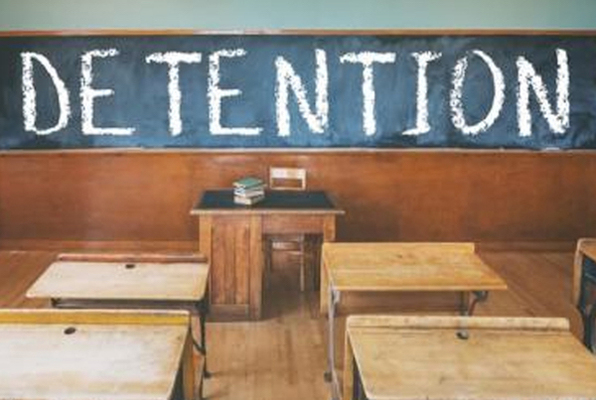After the 2021-2022 school year, in which there were only five detentions, MHS has issued 279 detentions as of Nov. 3, Assistant Principal Jonathan Mach said. Part of the reason there were so few detentions last year was due to concerns of spreading COVID-19, he added.
COVID-19 disrupted the procedures put into place by the administration, leading to some restarting and the decision to take detentions away last school year, Associate Principal Skyler Draeger said. Many students were taking advantage of the perceived lack of consequences, and so detentions were brought back to establish boundaries, he added.
“There is a certain group of students that will push a boundary until they come up with a consequence,” Draeger said. “And so we found that when we realized, ‘Oh, these detentions aren’t serving a great purpose right?’ We pulled them away completely last year.”
In the 2021-2022 school year by Nov. 3, there were 12,973 tardies, while this year has had 10,755, Mach said. While it cannot be determined if this decrease in tardies is due to detention, he is hoping that it is lessening it as people do not like detentions, he said.
“What that (lack of detention) did is a whole group of students that really hadn’t had that many tardies in the past, were like, ‘Oh, there’s no rules,’” Draeger said. “So they all of a sudden amp their tardies up, and we realize ‘Oh, okay, so we need a little … boundary to stop that group.’”
The MHS 2022-2023 Handbook lists detentions as a level two consequence, seeking to address behaviors such as persistent tardies, harassment, and engagement in obscene acts. Administrators know that consequences do not always stop behaviors, but some level of consequence is needed, Draeger said.
“It’s less about punishment … and more about righting a wrong,” Draeger said. “What we’re aiming for here is consistent policy so that we do set boundaries. We want to make sure students know where they are. There are consequences to those boundaries. … But we don’t want those consequences to become meaningless.”
Assistant Principal Jennifer Hutchison also noted that there are two different types of detentions held: teacher detentions and detentions. Teacher detention, a level one consequence, is no longer than 15 minutes and does not require parents to be notified, Hutchinson said.
English teacher Ryan Payne, who has been holding detention during October, said he typically has around 25 students in his room during detention. “Students are supposed to be doing schoolwork … They get in at 3:45. You keep them in here for an hour, and then they go home.”
Payne did not receive many directions from the school on how to run detention, he said. He also noticed that the detentions at MHS are more crowded than the detentions at other schools he had taught at. The schools he had taught at usually had five or six students for detention, though this could be due to MHS’s size, he said.
“Things feel more under control; things feel a little calmer, a little happier,” Draeger said. “There have been fewer incidents where things feel out of control. I’ve seen a positive impact. That doesn’t mean that everything is perfect. We are in a high school campus, and those things take time and we’re a large school. … I feel like overall the atmosphere, at least from my perspective, has been an improvement this year.”

